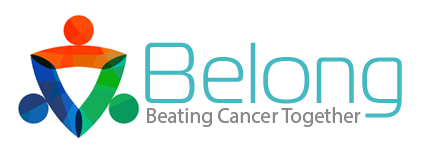Researched by Belong.life and Sourasky Medical Center, Oncology Division. published by ASCO
Authors: Eliya Shachar, Noy Moisa, Shira Peleg-Hasson, Tamar Safra, Ido Wolf, Daniel A. Vorobiof
Background:
Quality of life (QoL) assessments do not measure pts’ ability to maintain normal daily activities during cancer therapy. Misbeliefs might promote avoidance of activities perceived as dangerous, compromising pts QoL. We examined the daily practices of actively treated pts with cancer.
Methods:
A locally validated questionnaire at the Tel-Aviv Sourasky Oncology Division was distributed internationally using the Belong.life social and professional digital health platform. We examined real-world pts reported practices, provided voluntarily and anonymously. The survey consisted of 15 questions, including demographic, clinical, behavioral parameters and sources guiding and supporting pts practices. Independent clinical and demographic variables were analyzed. Statistical analysis was performed, and a multivariate logistic regression was conducted to identify factors predicting restrictive behaviors.
Results:
The study population comprised 1,395 pts receiving active cancer therapy, reporting their outcomes from the Belong digital platform. Most respondents were from the United States (1082, 77.70%) and Israel (223, 16%), over the age of 40 (1309,93.8%),and female (987, 70.75%). Most common tumor types were breast (394,28.24%) and gastrointestinal cancers (199,14.26%). The majority of pts (1,005,72.88%) reported on at least 1 adopted limitation in daily activities, and 305 (21.86%) maintained more than half of these constraints. Daily life restrictions included avoiding sun exposure (779, 57.83%), international travel (417, 33.33%), indoor public places (malls, etc) (431, 33.13%), hair dyeing (271, 22.72%), domestic tourism (284, 21.93%), contact with friends and family (231, 17.69%), children and grandchildren (202, 16.33%), outdoor public spaces (190, 14.62%), and contact with pets (135, 10.41%). Multiple sources were implicated by the pts as guiding their behavior, with the most common being health-care professionals (951, 65.95%), followed by both non-medical authorities and health-care team (320, 22.19%), and non-medical advisors, including internet, pts forums, partners, friends, and family (171, 11.86%) Pts who maintained strict (≥50% of the limitations) and less strict restrictions, demonstrated no significant association between country of origin (p = 0.118), and education level (p = 0.3591). A significant association was noted between younger age (p = 0.0014), female sex (p = 0.0141) and primary cancer site (p < 0.0001), and the adoption of strict restrictions.
Conclusions:
The majority of pts reported compromised daily activities, which are likely attributed to misconceptions about therapy and disease, deleteriously impacting QoL, therefore, impeding their ability to continue to conduct a complete and meaningful life. These findings require development of tools examining patients’ real-daily life activity as an additional endpoint in clinical trials.
For more info on abstract 6592: Real-world behavioral restrictional practices of cancer patients (pts).








